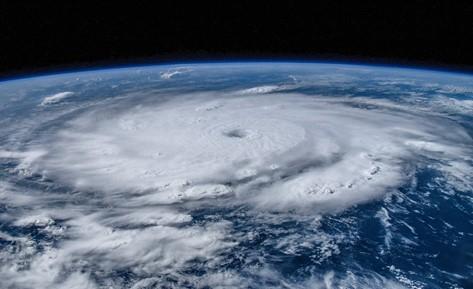Researchers at the University of Miami are using artificial intelligence (AI) to enhance hurricane forecasting, particularly in understanding rapid intensification. Led by Dr. Fischer, they are analyzing historical hurricane data and developing AI models to improve storm predictions. Their work, funded by NOAA, also focuses on improving radar data quality from hurricane hunter aircraft. AI models like Pangu-Weather and GraphCast have already outperformed traditional weather prediction methods, offering faster and more accurate forecasts. Despite AI's advancements, Fischer emphasizes that human expertise remains essential in communicating storm threats to the public.

Researchers at the University of Miami Rosenstiel School of Marine, Atmospheric, and Earth Science are leveraging the power of artificial intelligence (AI) to revolutionize hurricane prediction, particularly in understanding rapid intensification. Dr. Fischer, an assistant professor in the Department of Atmospheric Sciences, is at the forefront of this effort, using AI to analyze historical hurricane data, including wind speeds, temperature, and humidity, collected by buoys, satellites, and hurricane hunter aircraft. By identifying patterns among rapidly intensifying storms, Fischer hopes to improve tropical cyclone forecasting and provide better warnings for vulnerable populations.
Fischer's AI research extends to improving the quality of radar observations collected by hurricane hunter aircraft, a study funded by the National Oceanic and Atmospheric Administration (NOAA). His machine learning technique helps filter out noise and artifacts from radar data, a process that previously took hours for humans but can now be completed in minutes with AI.
In a future project, Fischer is seeking funding to build a 3D structure of active hurricanes using decades of satellite data, eliminating the need for aircraft to fly into storms. This could revolutionize storm tracking globally, particularly in regions without routine reconnaissance flights.
AI's speed and accuracy have proven valuable in weather forecasting. In 2024, Google DeepMind's GraphCast AI model accurately predicted that Hurricane Beryl, a Category 5 storm, would make landfall in Texas, outperforming traditional European models. Fischer also highlighted how Pangu-Weather, another AI model, consistently outperformed numerical weather prediction models in track forecasts.
Despite AI’s growing capabilities, Fischer emphasized that humans remain essential in conveying storm threats to the public. "AI may produce the perfect forecast, but if it’s not easily understood, people won’t benefit from it," he explained.
Fischer, along with fellow researcher Mu-Chieh “Laura” Ko, is part of a broader movement to integrate AI into weather forecasting, aiming to save lives and protect infrastructure by improving early warnings for storms.
This cutting-edge work is also expected to benefit poorer nations that lack the resources for advanced weather prediction systems, provided AI-generated forecasts are made accessible and well-communicated.
As AI models continue to evolve, Fischer believes they will become a critical tool in the fight to mitigate the impacts of extreme weather events, though humans will always be needed to ensure that forecasts reach and are understood by those in harm's way.
Source:
University of Miami
https://news.miami.edu/stories/2024/09/a-powerful-new-tool-in-hurricane-forecasting.html .
Provided by the IKCEST Disaster Risk Reduction Knowledge Service System
Comment list ( 0 )
